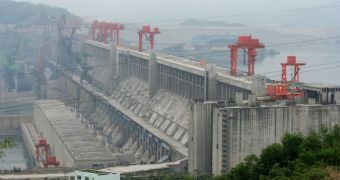According to a new scientific study, it may be that building large dams on rivers may influence the local climate, to the extent that more weather extremes would occur over that specific region in the coming years. The finding is very worrisome for another reason too – many of these large dams are very old, and engineers wonder if they are able to withstand the very extreme weather effects that they are creating. If not, then many people living downhill from a dam could be at risk of flooding and even death, specialists warn, quoted by LiveScience.
The idea that building dams has the ability to drastically influence the local environment is not new. More than 75 years have passed since scientists first drew attention to this correlation, yet no one bothered to consider their arguments. The main mechanisms through which dams influence the environment are their massive accumulation lakes, or reservoirs, which hold impressive amounts of water. That water has the ability to cool or heat the air above them, essentially introducing new factors in the delicate balance of the respective ecosystem.
As all meteorologists know, weather events stem directly from interactions between cool and hot air, so having massive reservoirs change the correlations that already exist in a certain area can make all the difference. In addition, the scientists say, dams also change the way in which soils downhill get their water, which means that those areas may alter the existing local climate patterns in turn as well. By increasing atmospheric moisture, dams promote the formation and fall of more precipitations, experts say, which is not always a good thing.
The conclusion was drawn based on data available from field studies, and from computer simulations of these scenarios. “The findings are still preliminary, but we do see a trend,” Tennessee Technological University hydrologist and researcher Faisal Hossain explains. “For instance, what we might have thought of as a 50-year flood – big ones that only come every 50 years or so – might have now become 30- or 40-year floods. Heavier events are much more common now,” the expert adds. Details of the work appear in the December 1 issue of the scientific journal Eos, a publication of the American Geophysical Union.

 14 DAY TRIAL //
14 DAY TRIAL //